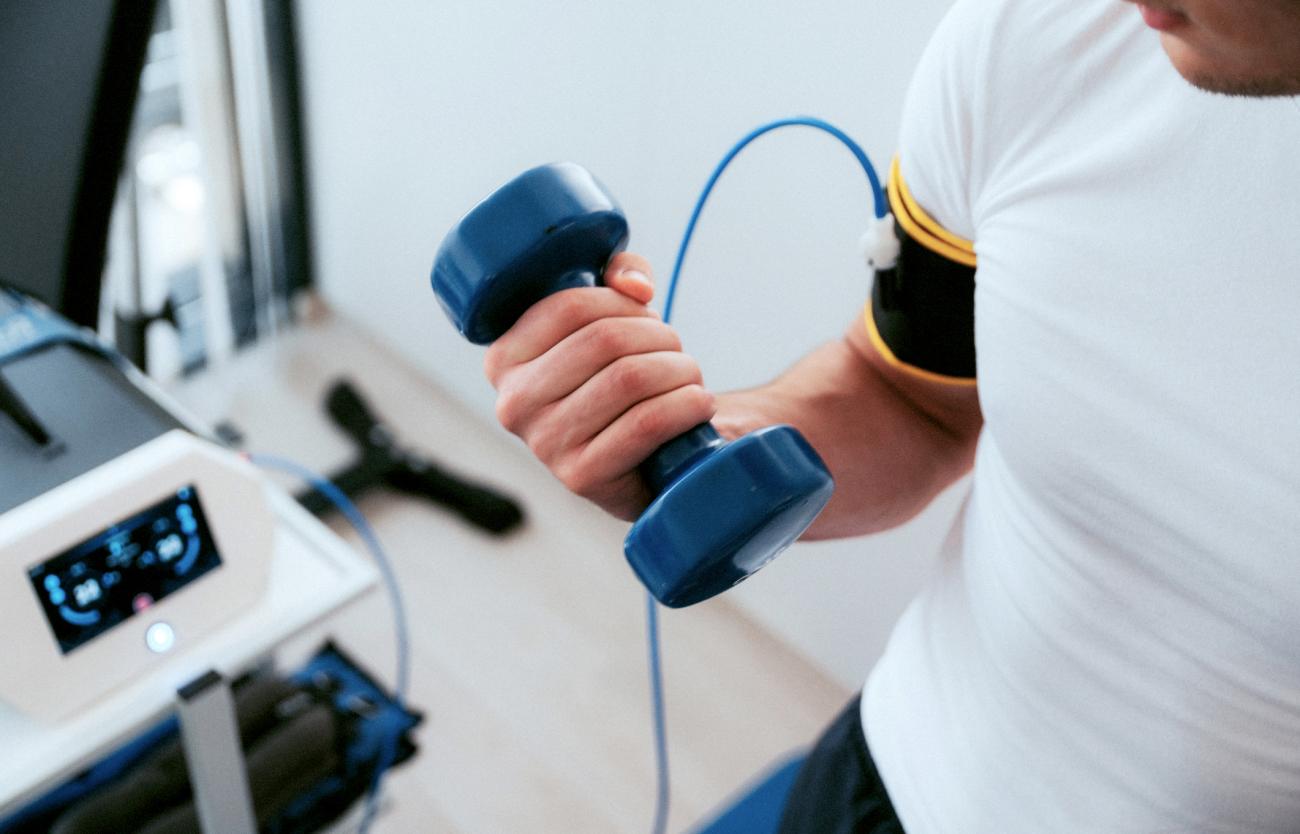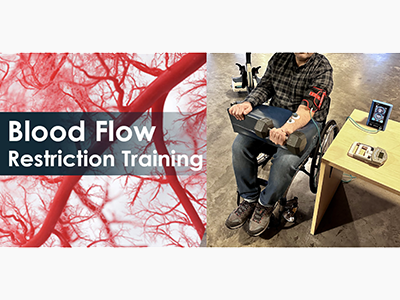
The novel approach shows promise as a means to build muscle force while reducing the risk of injury present in other modalities.
People with spinal cord injury (SCI) are at greater risk of severe muscle weakness than their non-SCI peers, with maintaining adequate muscle mass essential to prevent muscle wasting and atrophy. In a study led by Vancouver Coastal Health Research Institute researcher Dr. Babak Shadgan, blood flow restriction (BFR) exercise — used by athletes such as bodybuilders — enabled people with SCI to gain strength using lighter weights, while also reducing their risk of injury.
“Building and maintaining upper body muscle mass through strength-training exercise can facilitate daily tasks among people with SCI, such as propelling a wheelchair, making a meal or dressing,” notes Shadgan.
“We found that low-intensity exercise with BFR shows promise as a means for people with SCI to build muscle strength and achieve greater quality of life.”
High-intensity interval training (HIIT) and strength training are proven ways to build muscle mass; however, HIIT and lifting heavier weights also come with an increased risk of injury, says Shadgan. “HIIT in particular can lead to overuse injuries that limit range of motion, limb function and/or reduce strength, as well as cause pain or discomfort.”
“Many high-performance athletes, such as wrestlers, soccer players and weightlifters, use BFR training, which led me to wonder if this approach could help people with SCI.”
Research has pointed to a connection between BFR exercise and chemical responses in the body, particularly through the endocrine system and muscle activation. However, the physiological mechanisms underpinning the effectiveness of BFR is an ongoing area of investigation.
A home-based, portable application is being explored
Shadgan’s study is the first comprehensive investigation of its kind in the SCI population. Researchers placed a personalized tourniquet system around the arms of 10 SCI participants who performed four sets of wrist-curl exercises of 30, 15, 15 and 15 repetitions each twice per week for eight weeks.

A pre-assessment determined the maximum weight that each participant could curl one time. Participants were randomly assigned a right or left test arm, which was wrapped with a personalized tourniquet, restricting blood flow to 60 per cent of complete blood flow stoppage.
Participants then curled an adjustable dumbbell weighing 30 per cent of their one-rep maximum. For example, if their one-rep maximum was 30 pounds, the participant would lift 10 pounds with their test arm. With their other ‘control’ arm, participants lifted a dumbbell weighing 50 per cent less than their one-rep maximum.

By the end of the study, participants significantly increased their forearm muscle strength on the low-intensity BFR test side, lifting on average 7.5 kilograms more than they could at baseline. On their control arm side, participants could lift only around 4.4 kilograms more.
“We have now validated an exercise program that is safe and effective for people with SCI.”
Researchers also monitored participants’ heart rates and blood pressure while exercises were performed, finding that all participants remained within safe ranges of blood pressure during the experiment.
Many participants expressed that they experienced improvements in their daily activities and health status. One participant shared with the research team: “I have noticed a huge improvement in my strength and ability to push my wheelchair. Also, my strength in grip and opening things has improved. Overall, I am so happy with the results. I definitely notice a difference in my daily life.”
“It has improved my ability in my daily activities such as gardening, handling my cup of coffee and swimming.”
The study team is now exploring a home BFR setup involving a compact tourniquet device and an adjustable weight and tablet-based platform that could be used by people with SCI with the remote or virtual support of a trainer or physical therapist.


